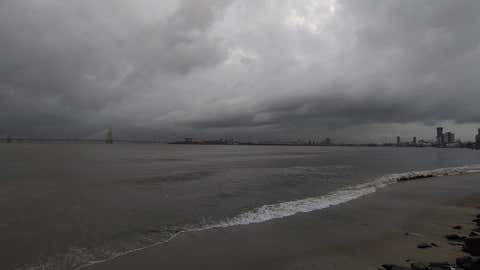
(BCCL Mumbai)
Tuesday, November 7: Following the formation and subsequent intensification of Cyclone Tej into an Extremely Severe Cyclonic Storm during the fourth week of October, the Arabian Sea has remained calm and largely activity-free. But now, a new system appears to be brewing in these waters.
As per the India Meteorological Department (IMD), a cyclonic circulation over southeast and adjoining east-central Arabian Sea is likely to influence the formation of a low-pressure area over east-central Arabian Sea on Wednesday (November 8).
The full extent of this emerging system’s impact remains uncertain, but initial meteorological activity appears to be affecting the weather along India’s western coast, particularly in Maharashtra.
The IMD, in an uncommon twist for November, has issued predictions for isolated to scattered rainfall of light to moderate intensity over Konkan-Goa and Madhya Maharashtra this week, stretching from Tuesday to Saturday, November 7-11.
Additionally, the IMD’s Mumbai-based Regional Met Centre has issued district-level yellow watches for Ratnagiri, Sindhudurg, Satara, Sangli and Kolhapur for the next three days (Nov 7-9). This advisory urges the residents to ‘be aware’ of the local weather situation.

(TWC Met Team)
It is important to note that weather forecasts are ever-evolving, subject to the whims of nature, and predictions and advisories may therefore change as the meteorological situation unfolds.
While November showers are not the norm for Maharashtra, the region occasionally experiences unexpected rainfall during this time of the year, particularly when meteorological activity is brewing in the Arabian Sea.
In fact, owing to the difference in wind patterns and sea surface temperatures, the North Indian Ocean has a history of generating tropical cyclones from October to December, also known as the post-monsoon cyclone season.
Interestingly, a recent study has indicated that the Arabian Sea appears to be witnessing an increase in cyclonic activity of late, which could be ‘tightly linked’ to rising ocean temperatures and increased availability of moisture under global warming.
**
For weather and science updates on the go, download The Weather Channel App (on Android and iOS store). It’s free!





